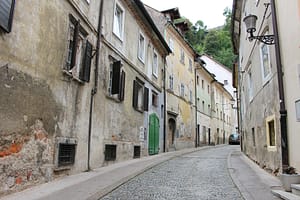The land where Slovenia resides has been inhabited by humans since prehistoric times. The Romans conquered the region and constructed roads and settlements across the country all the way back in the 1st century AD. The area was invaded by Huns, Germanic tribes, and Slavs before becoming part of the Bavarian Empire in the Middle Ages, which was when Christianity was introduced to the region. Provinces began consolidating and, by the 14th century, most of Slovenia’s territory was under Habsburg control. The dynasty retained power until the 20th century despite reoccurring peasant revolts in the 15th to 17th centuries.
Around the 16th century, locals began to recognize their own ethnic identity and the first Slovenian language books were printed. The Enlightenment period saw the Hapsburg monarchy enable the cultural progress with economic advancement prompting a middle class to develop. Compulsory primary education was introduced in 1774, during which time Slovenian intellectuals further contributed to developing unique regional traditions. From 1809 to 1813, Slovenia was part of the Napoleonic French Empire, with Ljubljana as the capital. This period of French rule provoked a rise in Slovenian national consciousness. After the fall of Napoleon, Slovenia was returned to the Austrian Empire.
WWI inflicted heavy casualties on the Slovenes and many ended up perishing in Italy and Australia’s refugee camps. In 1918, the new State of Slovenes, Croats and Serbs gained independence from Austria and was renamed the Kingdom of Yugoslavia in 1929. Slovenia became the center of industrial production and a period of economic stability and prosperity followed.
During WWII, Yugoslavia was invaded by the Axis Powers and Slovenia was divided between Italy, Nazi Germany, and Croatia. There was a strong resistance movement, as well as civil unrest for being passed around so much. During the late parts of the war and shortly afterward, fighting between Slovenian factions led to many deaths. After the effort, Slovenia became part of socialist Yugoslavia although it enjoyed some level of autonomy. Between 1945 and 1953, there was a wave of political repression followed by gradual liberalization. Slovenia managed to preserve a high level of economic development, despite restrictive legislation in Yugoslavia.
The year 1987 saw the first blatant Slovenian demand for independence and a mass democratic movement pressured the Communists toward reform. In April 1990, Slovenia held its first election. On December 23, 1990, an overwhelming majority voted for an independent Slovenia. The army tried to intervene, but after the Ten Day War, an agreement was signed that led to the establishment of present day Slovenia in 1991, which became part of the EU in 2004.
Slovenia has produced a significant number of poets, writers, artists, and musicians, many of whom created work which has strongly influenced the cultural landscape. Occupation by Roman, Germanic, and Eastern bloc forces has helped shape everything from architecture to cuisine. These influences have been absorbed rather than adopted, and Slovenians are justifiably proud of their unique national identity. Age-old handicrafts such as glassware and lace are still admired, and many traditional buildings have been lovingly preserved and are still in use. Slovenians are active people, possibly because the landscape lends itself so readily to outdoor sports, and the nation has produced an above average number of athletes.

